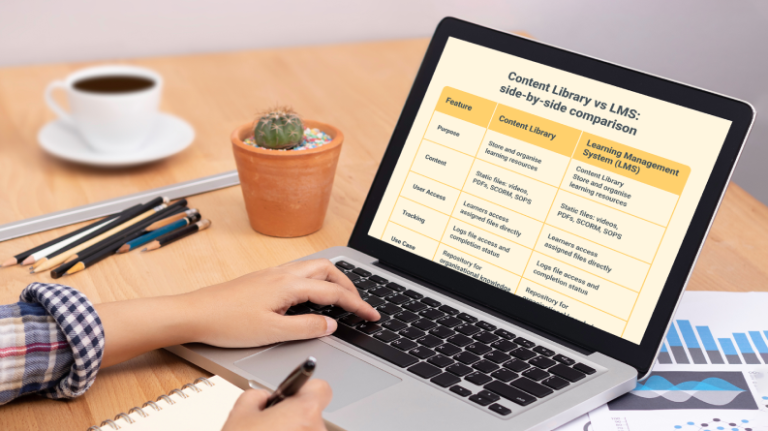Given that there are as many as five generations to be found in the contemporary workforce, you must factor in not only individual learning and communication styles, perspectives, and work habits but also those that are broadly characteristic of each generation.
Participating in a survey of 5,598 employers in 36 OECD (Organisation for Economic Co-operation and Development) countries, 83% of global executives agreed on the contribution of a multigenerational workforce to business growth and success. 73% also responded that given adequate tools and support, they would ensure that such a diverse workforce received training and lifelong learning opportunities. However, Harvard Business Review (HBR) reports that fewer than 3 out of 10 employers tailor their training programmes based on age-related criteria.
Consider the tips below to create and implement a training strategy that is inclusive and effective for today’s workforce’s diverse generations.
How to Develop an Inclusive and Productive Learning and Development Strategy
Acknowledge the Diversity
To begin with, recognise, understand, and appreciate the advantages of multigenerational diversity and help your workforce do so, too. In fact, you can turn it into a competitive advantage. Motivate your staff to sign up for DEI (diversity, equality, and inclusion ) courses that focus on how varying skills, backgrounds, and personality traits across age groups can strengthen teamwork, productivity, and creativity, but avoid stereotypes. Within the broader company strategy, allow employees to decide how they wish to learn based on their current skills and experiences.
Use a Learning Management System (LMS)
Use a well-designed and easy-to-use LMS to support the planning and delivery of your training strategy. Alison’s Free LMS allows your employees to upskill themselves using personalised and self-paced learning paths that help enhance their productivity and decision-making and help the organisation fulfil its objectives. The Free LMS is easy and quick to set up, available for unlimited users and allows you to track employee learning progress through daily, weekly, and monthly reports providing real-time data and analytics.
Leveraging LMS capabilities, such as augmented reality, virtual reality, and artificial intelligence (AI), can also make training programme content immersive and innovative for all participants, regardless of age.
Use Technology, Particularly Video
The right technology and tools can help your organisation deliver flexible and scalable training programmes in a way that a single topic or message can be tailored to diverse audiences. In particular, the use of video-based training in place of formal classrooms has the potential to overcome generational and individual differences in learning styles and can facilitate self-directed learning. Video learning tools are useful to share on-demand knowledge informally. They are also cost-effective, have a global outreach, and allow learner interaction through embedded quizzes and the opportunity to leave comments or questions.
Make Programmes Collaborative
Whether an organisation specialises in technology, healthcare, finance, education, or another field or is non-profit, it can benefit from intergenerational collaboration in its staff upskilling or reskilling strategies. Training programmes, seminars, and workshops that require teamwork and communication encourage the exchange of multi-faceted knowledge, experience, and skills across age groups. They can also help resolve conflict, promote resilience and mutual respect, drive innovation, and fulfil business and employee goals. For instance, in Google’s g2g programme (“Googlers-to-Googlers”), employees volunteer to teach their peers, thereby boosting innovation and the growth of collective skills.
Provide Technology Training
Encouraging digital proficiency across workforces can help organisations adapt to rapidly advancing technology while boosting revenue growth by up to 25%. Varying digital skills can create intergenerational gaps. Providing employees with user-friendly digital tools and training them in their usage can help close these gaps and boost productivity. Your workforce, regardless of age, can choose from an extensive range of
Encourage Reverse Mentoring
Encouraging younger employees in your organisation to mentor older employees through “reverse mentoring” is useful to facilitate the transfer of certain skills, such as technology and social media, and can encourage employee retention, culture change, and diversity. Pairing employees from different generations can also facilitate mutual learning.
Craft Engaging Microlearning Experiences
Microlearning initiatives must clearly communicate SMART ((Specific, Measurable, Attainable, Relevant, Timely) learning goals and objectives and emphasise the WIIFM (What’s in it for me) factor to learners. Creating anticipation through surprise and delight tactics keeps learners invested, while inspirational storytelling and relatable content enhance focus and retention. By presenting unconventional ideas and stimulating tasks, microlearning can challenge participants and foster a sense of accomplishment. Generation-appropriate language, multimedia effects, and visually appealing design elements further enhance engagement and retention.
Integrate Training into Daily Tasks
If possible, it helps to integrate training into daily work when addressing an intergenerational workforce. Using such a methodology allows employees to access their learning material in their workflow rather than needing to log into a separate system and find the material.
Provide Training During Breaks at Work
When possible, consider setting up training sessions, including mentoring, during lunch breaks or even on weekends to optimise productivity while ensuring that employees maintain a healthy work-life balance.
Emphasise and Reward Continuous Education
Employers can advocate lifelong learning and boost employee satisfaction by organising workshops and webinars and encouraging employees of all ages to pursue online courses and other forms of self-development.
What Are Some Free Online Courses at Alison Suited to Training Multiple Generations at Work?
At Alison, we provide a wide range of free online courses to empower workforces across various age groups and help you integrate your training strategy for individual and organisational growth. Encourage your employees to create their free accounts to pursue one or more relevant courses, ranging from those that develop technical or IT skills to those that foster interpersonal and leadership skills.
Some of Alison’s courses suitable to train an intergenerational workforce include:
- Training of Trainers – Training Methods
- Discussing Diversity, Equity and Inclusion in the Workplace
- Introduction to Interpersonal Skills
- Introduction to Community Development
- Introduction to Information Technology for Managers
- Diploma in Information Technology Support
- Introduction to Database Concepts
- Microsoft Word for Administrative Professionals
- Microsoft Teams Essentials
- Data Entry Tools and Techniques








